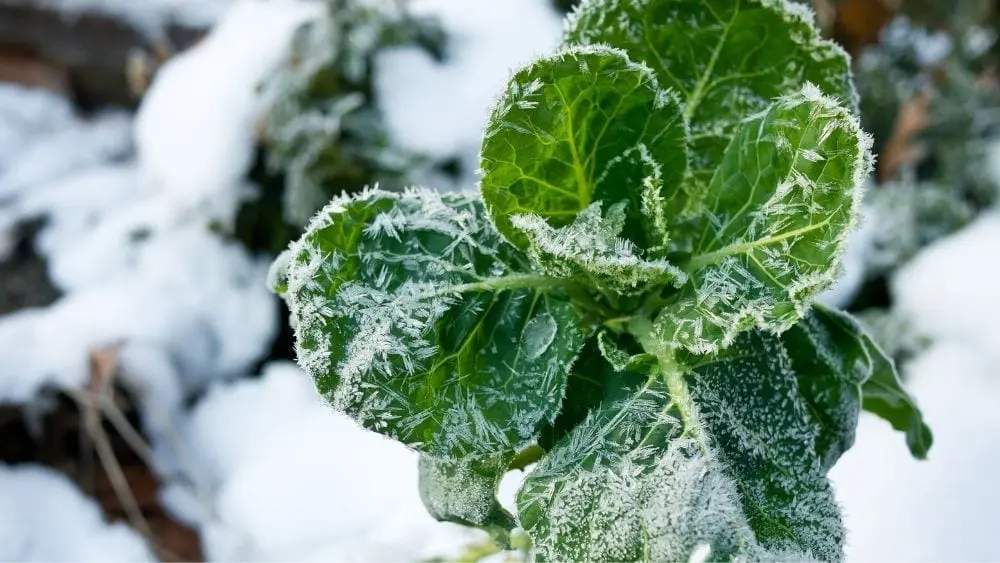
Before the first frost, it’s important to prepare your land and your livestock for a drop in temperature. Otherwise, you might face a loss of crops in the springtime, and potentially expensive veterinary bills for distressed livestock.
It’s crucial to ensure that you have stocked up on water, food, and heat to last through the harsh winter and that these resources remain clean, dry, and accessible. If this is your first winter season owning a farm or livestock, consider these steps to ensure a safe weathering of the chilly season.
Stock Up On Supplies
In the event of a hard freeze or a snowfall that leaves you shut in, it’s a best practice to keep an emergency supply of water on hand, as well as an assortment of non-perishables. Keep a flashlight, candles, and plenty of dry blankets for extra warmth. If you have a fireplace in your home or farm supply house, make sure you have a stash of firewood handy.
If you live separately from your farm supply, you still want to be prepared in the event of an emergency while out tending to the crops or livestock – in case of an ice storm or a snow-in. Always keep your cell phone on hand and a radio. It is recommended to keep more than one line of communication open at all times in case of an emergency.
Perform Maintenance and Repairs
During the long winter season, maintaining cleanliness and healthy living standards for your farm and livestock will become more difficult. Be sure to complete a thorough overhaul and deep clean every area prior to the cold season to ease the burden of keeping order intact. Then, maintain a regular cleaning schedule throughout the season.
Check all water pipes and ensure that all plumbing is in good-working condition. Insulate any pipes that could potentially freeze well in advance of the first frost and limit the possibility that a water pipe could burst or break. Ensure that all water heaters are functioning, and that any ongoing maintenance is completed by a qualified technician.
Protect your machinery and equipment from snow, sludge, and ice. Keep any tools stored away in a safe place and allow easy access to anything that you may need during the cold months. Keep your storage areas clean and dry.
Consider all of your entrance and exit points on your property. Make sure that your pathways are cleared or can easily be accessed in case you need an exit plan or in case of emergency.
Prepare Your Livestock
Similar to preparing yourself and your home, you should also take care to protect your livestock. Animals can become anxious and distressed during the cold winter months, just like humans. It’s important to keep them as comfortable as possible so that they can adapt to the season and remain calm.
Clean and prepare their stalls for the winter, and maintain a regular cleaning and feeding schedule throughout the season to ensure consistency. Stock up on feed and bedding prior to the first frost, and make sure these and any other supplies are kept in a cool, dry storage area. Nothing is quite as bad as trying to warm up in wet, muddy or icy bedding during a snowstorm. Consider adding a layer of sawdust or sand below the animals’ bedding to keep it dry. Also, change the bedding often. Make sure their stalls have ventilation, and that their area is insulated enough to keep warm.
Make sure to keep enough food for the winter. Remember that livestock can typically tolerate 20-32 degrees Fahrenheit before falling into cold distress, where they will need an increase of regular feed to maintain a normal body temperature. Be sure to research your species and consult your large animal veterinarian before the first cold snap.
Consider the livestock shelter. Look for areas that need repairs, such as the roof or walls and any gates. Confirm that the locks are in working condition. Check on your water supply to make sure that it is constantly flowing and available, and install or maintain any water heaters as needed.
Feed The Soil
Prepare for spring planting well in advance. In the early fall, before the first frost, remove all debris from your crop beds. Pull weeds, rake leaves, and eliminate the excess clutter from the area that will be replanted in the spring.
After clearing out the area, gently till the soil. This will aerate the topsoil and break up packed dirt. It will also loosen up any insects and reduce the number of beetles and grubs that will pop up again in the spring.
After tilling, lay down any organic material and compost on top of the soil to feed in nutrients. Add in any manure, leaves, or nutrient-rich soil and mix it together with the existing soil.
Cover Crops
Another option to keep your soil alive and well throughout the winter months is to plant a cover crop. A cover crop is a fast-growing plant that is often used to improve soil quality during the winter months. These crops should be planted after the harvest, at least four weeks prior to the first frost. They grow quickly and will cover your area throughout the winter before being tilled in the spring.
Cover crops – such as buckwheat, red clover, and oats – provide nutrients to the soil, attract healthy bugs and microorganisms, and improve soil fertility. By using a cover crop, you can rest assured through the winter in knowing that the soil is being fertilized and prepared for the new season to come.
Brace Yourself, and Then Look Forward to Spring!
Winter preparations can seem like a massive undertaking, whether it is your first year working a farm or you are a seasoned veteran. The key takeaways as you make your preparations are to:
- stock up on food, water, and heat supplies for yourself and your livestock
- perform full-service maintenance, repair any leaks or faulty structures, and
- nourish your soil to be ready for planting season.
When you have an established plan, you will feel confident and ready to take on the cold season, and then look forward to new crops and vibrant life again in springtime!

Melanie Theriault is a writer, counselor, and lifelong learner. She holds a B.A. in Sociology from Southwestern University, where she discovered her passion for fostering human connection through storytelling.
 9 Benefits of Rural and Suburban Housing
9 Benefits of Rural and Suburban Housing